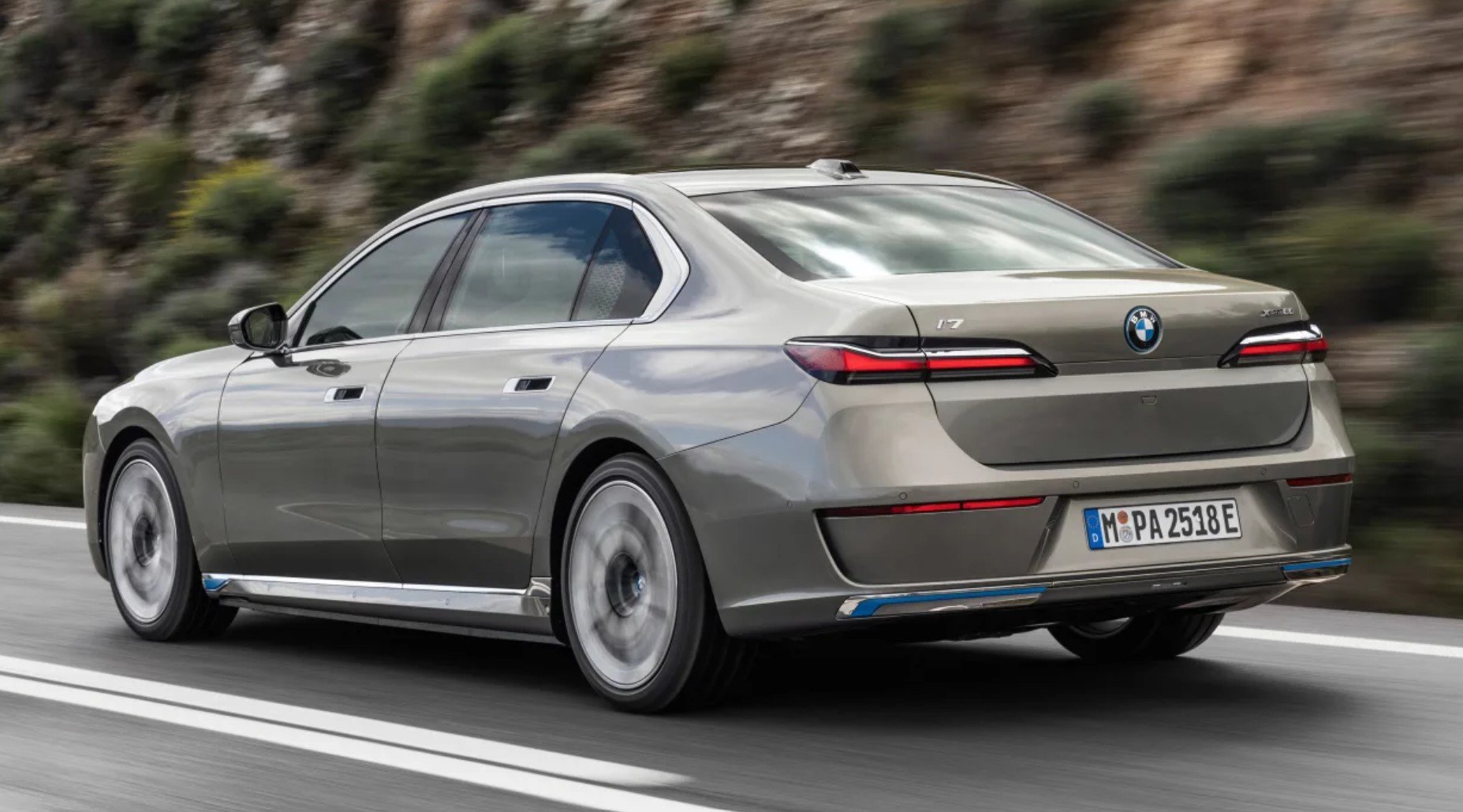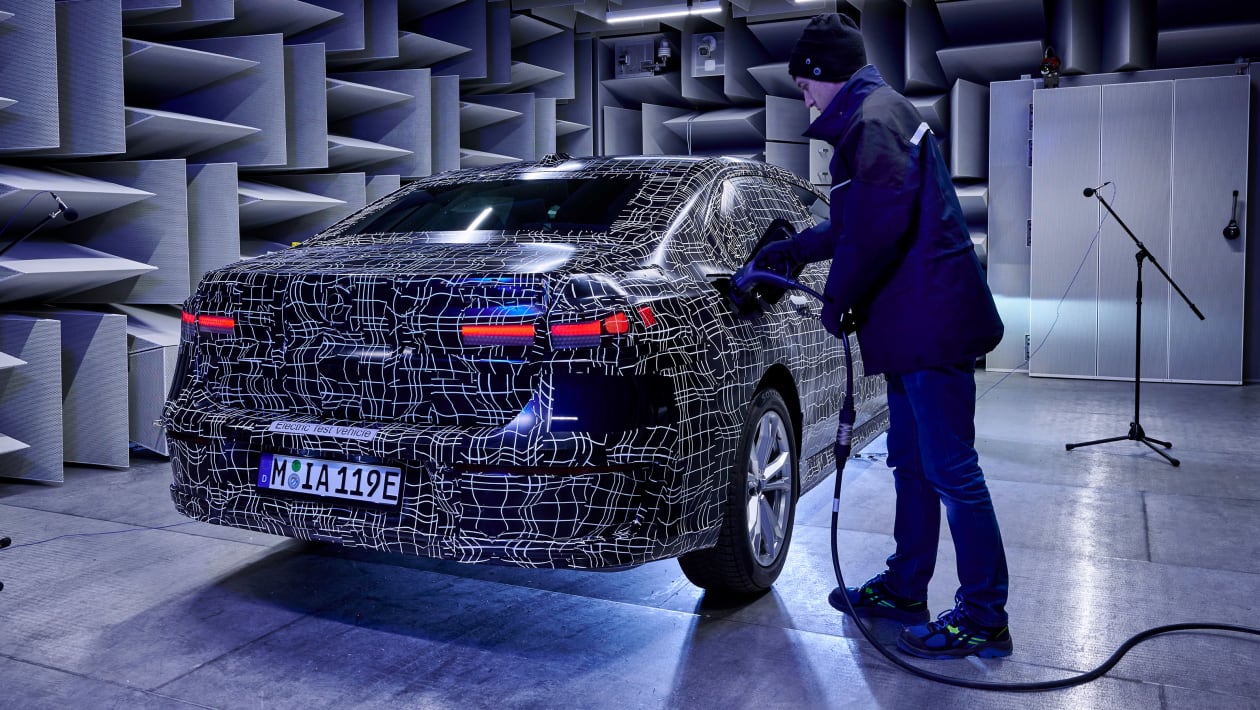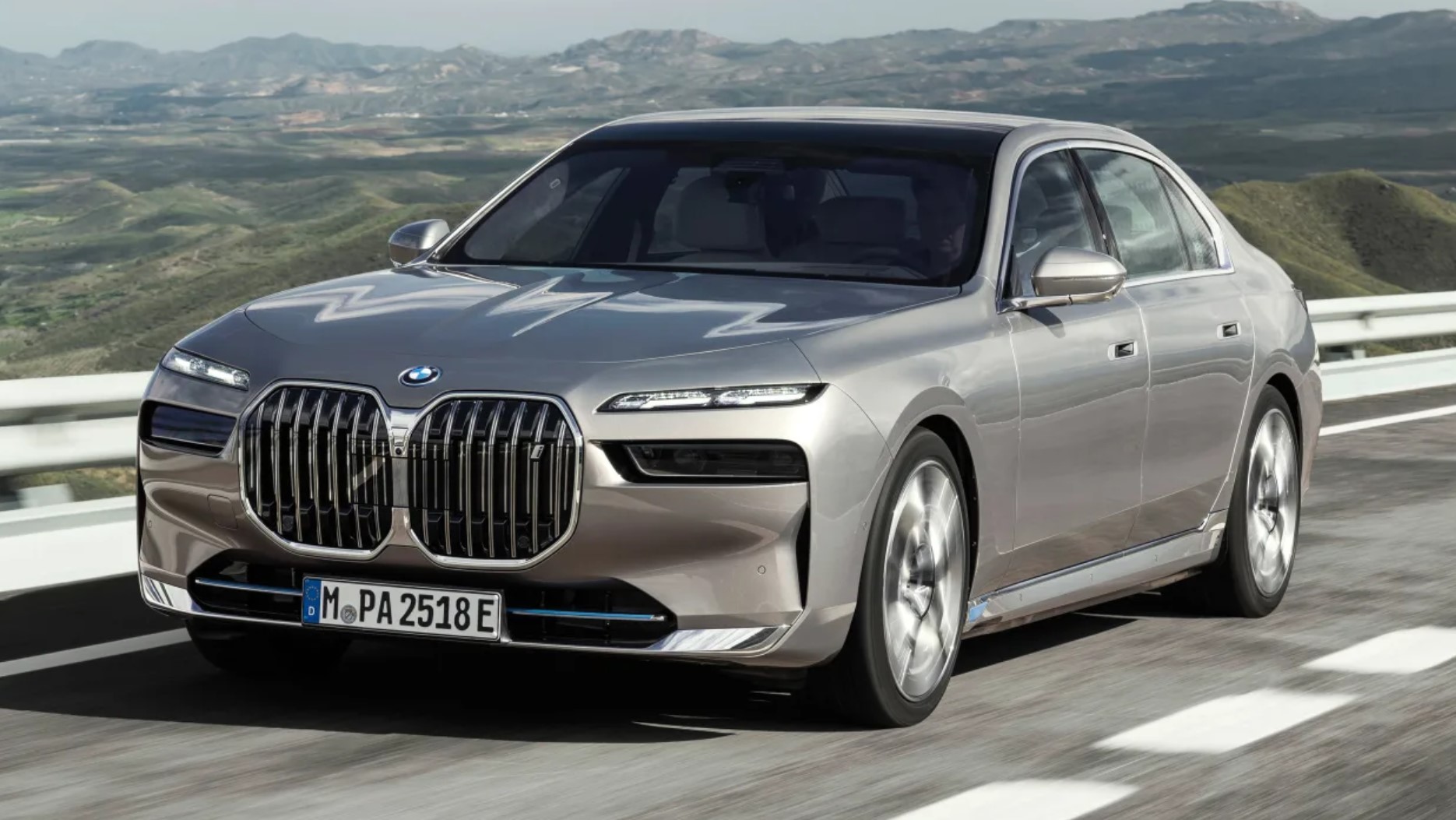EV can take on board 171km of range in 10 minutes due to improved battery management and cooling.
Although much of the chat surrounding the new BMW 7 Series has focused on its looks, BMW’s electric drive technology continues to evolve underneath that controversial skin.
The first global model from launch will be the BMW i7 xDrive60 BEV powered by the brand’s existing fifth-generation eDrive package, with elements of it, such as the regenerative braking functions, tweaked further to eke out even more efficiency from the drivetrain.
The fifth-generation eDrive is based on drive motor-generator technology that does away with permanent magnets in the rotor (the spinning part of the motor) and the rare earth metals they are made of.
The price of neodymium oxide, used to make the high-powered magnets, more than doubled back in 2019, and because 90 per cent of the supply comes from one source (China), moving away from its use improves the sustainability of EVs and knocks any concerns over future supplies on the head.
The alternative chosen by BMW is the electrically excited synchronous motor, which swaps the rotor’s permanent magnetic field for one produced by electricity. That involves feeding electricity to the rotor via brushes and a slip ring (rather than it being brushless), which is traditionally seen as a disadvantage. But in reality, the technology has worked fine for BMW so far and it also worked well in the Renault Zoe.
As is the norm now for 4×4 EVs, the i7 has two of these electric machines, one each on the front and rear axles, and it also has the latest version of the adaptive recuperation system found in the BMW iX and BMW i4, which is based on the idea of using navigation data to optimise the regenerative braking system on the fly as road conditions change. The existing system tweaks the level of regen for more or less retardation, or lets the car coast when the driver lifts off, a strategy generally considered more effective on open roads.
For the i7, this feature also takes downhill sections into account and draws on the traffic light recognition function to make the most of the energy recovery. The whole system still works even if the driver isn’t using the sat-nav.
Charging strategies have also been tuned so that the amount of cooling delivered to the battery varies during a rapid charge to ensure cell temperatures don’t drop too much, as well as preventing them from climbing too high.
If the driver is approaching a familiar rapid charge point without the car ‘knowing’ a charging stop is planned via the sat-nav, battery pre-heat can be selected manually, warming the battery cells to the level needed for the fastest charge to be accepted from the off. Before this type of pre-heat function, a cool battery would need to be brought up to temperature after charging started, taking longer.
The battery management system also tails off the charge rate as the battery nears full on a linear rather than stepped curve, says BMW, speeding up the charging process. In common with some other EVs, the i7 also has a heat pump that integrates with the drive and cabin systems, moving heating or cooling around in the most efficient way.
Jesse Crosse






